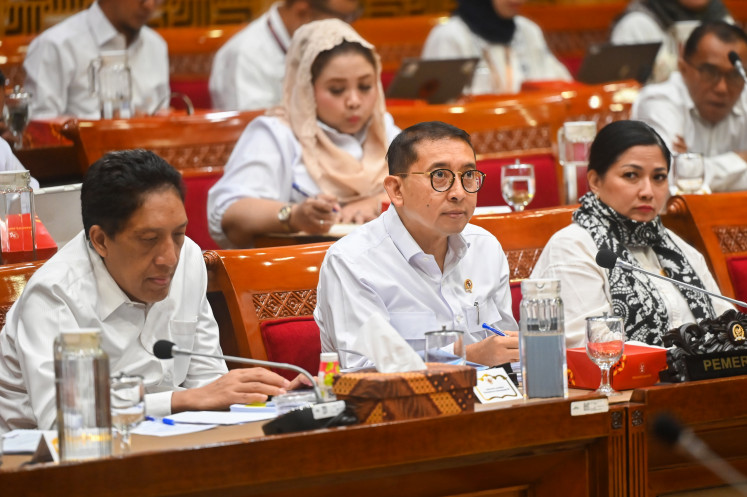Popular Reads
Top Results
Can't find what you're looking for?
View all search resultsPopular Reads
Top Results
Can't find what you're looking for?
View all search resultsEclecticism in splendor
Visiting Malaysia's Sabah state is a revelation
Change text size
Gift Premium Articles
to Anyone
V
isiting Malaysia's Sabah state is a revelation. With so many attractions there, the choices are eclectic. From the land to the sea, there's so much to do. Must-visit is the world-famous, UNESCO-recognized Kinabalu Park and Mt Kinabalu. The journey by road to Kinabalu Park takes 12 hours. Nature-lovers will surely enjoy spending time at the natural haven for various fauna and animal species.
The grand Mount Kinabalu, at 4095.2 meters, is located within the park, and is the most popular tourist attraction in Sabah, attracting numerous mountaineers to scale it to the summit. Along the journey, you must make a stop at the Poring Hot Springs, which has a thermal pool system that offers a Japanese-style hot spring bath in the open air. Having experienced all these, it's time to move on to other destinations around Sabah. We recommend some top-notch places worthy of your time.
Orang Utan Sanctuary: Located in the virgin forest reserve in Sepilok, and being one of the world's few orangutan sanctuaries open to tourists, it's accessible after a 25-km drive from Sandakan. Orphaned and injured orangutans are brought to Sepilok to be rehabilitated to return to forest life. The gentle great apes are very appealing. Tourists may even get to cuddle several trained orangutans for a memorable snapshot.
Sabah Foundation Building, Kota Kinabalu: The 30-story circular glass building, supported by high tensile steel rods emanating from a central building, is an architectural and engineering feat. It is one of only four such buildings in the world.
Kota Belud: This small town is located 77 km from Sabah's capital city, Kota Kinabalu. Every Sunday it comes alive in a scene of blazing, riotous color when the "Tamu" or open market, takes place.
Tuaran: Tuaran is the location of the region's agricultural station. Nearby is Mengkabong, a Bajau village built over water. Also close by is Tamparuli, a town specializing in the production of local handicrafts.
Penampang: Another village that offers an insight into Sabah's various ethnic groups, Penampang is home to the Kadazan people. The village is located 13 km south of Kota Kinabalu.
Sipadan Island: A diving paradise, Sipadan Island is located 30 km off the coast of Semporna, a small town on Sabah's southeast coast. The mushroomshaped Sipadan is the only oceanic island in Malaysia, offering colorful tropical fi sh and corals in its crystal clear waters.
Sandakan: This busy port on the Sulu Seam located 386 km from Kota Kinabalu offers a forestry exhibition showcasing the astounding variety of fl ora and fauna found in Sabah. For instance, the Sandakan Orchid House has a wide collection of rare orchids. Along the Labuk road from Sandakan is a crocodile farm, housing about 1,000 crocodiles of various sizes.
Gomantong Caves: Located 32 km south of Sandakan, the wonderful Gomantong Caves are the home to thousands of swifts that build their nests high on cave walls and roofs. Twice a year, nest collectors come to the caves and climb on tall bamboo poles to collect the nests, which are considered a delicacy. Besides swifts, the caves are also inhabited by millions of bats, which have become a spectacular sight to many tourists.
Semporna: Located on the southeast coast of Sabah, Semporna is the jumpingoff point for Pulau Sipadan, a diving paradise, and Pulau Gaya, the island where Sabah pearls are cultured.
Kudat: Located far away from Kota Kinabalu (238 km), Kudat is nevertheless worth a visit. Being the home to the colorful Rungus tribe, the journey to their village is also an attraction on its own, winding through the region's varied terrain of mountains, valleys and jungles.
Kota Kinabalu: Sabah's capital city Kota Kinabalu has a population of 300,000, and was built from the ruins of the WWII.
Sabah State Museum: This museum in Kota Kinabalu boasts top-notch collections of tribal and historical artifacts of the ancient people of Borneo and exhibits of fl ora and fauna, including rare birds, reptiles, animals and fi sh found only in Sabah.
Mengkabong Water Village: Located half-an-hour's drive from Kota Kinabalu is the Mengkabong Water Village where houses are built on stilts and linked by a maze of rickety plank-walks. An ever increasing population has seen the water village gradually expanding into the sea.










